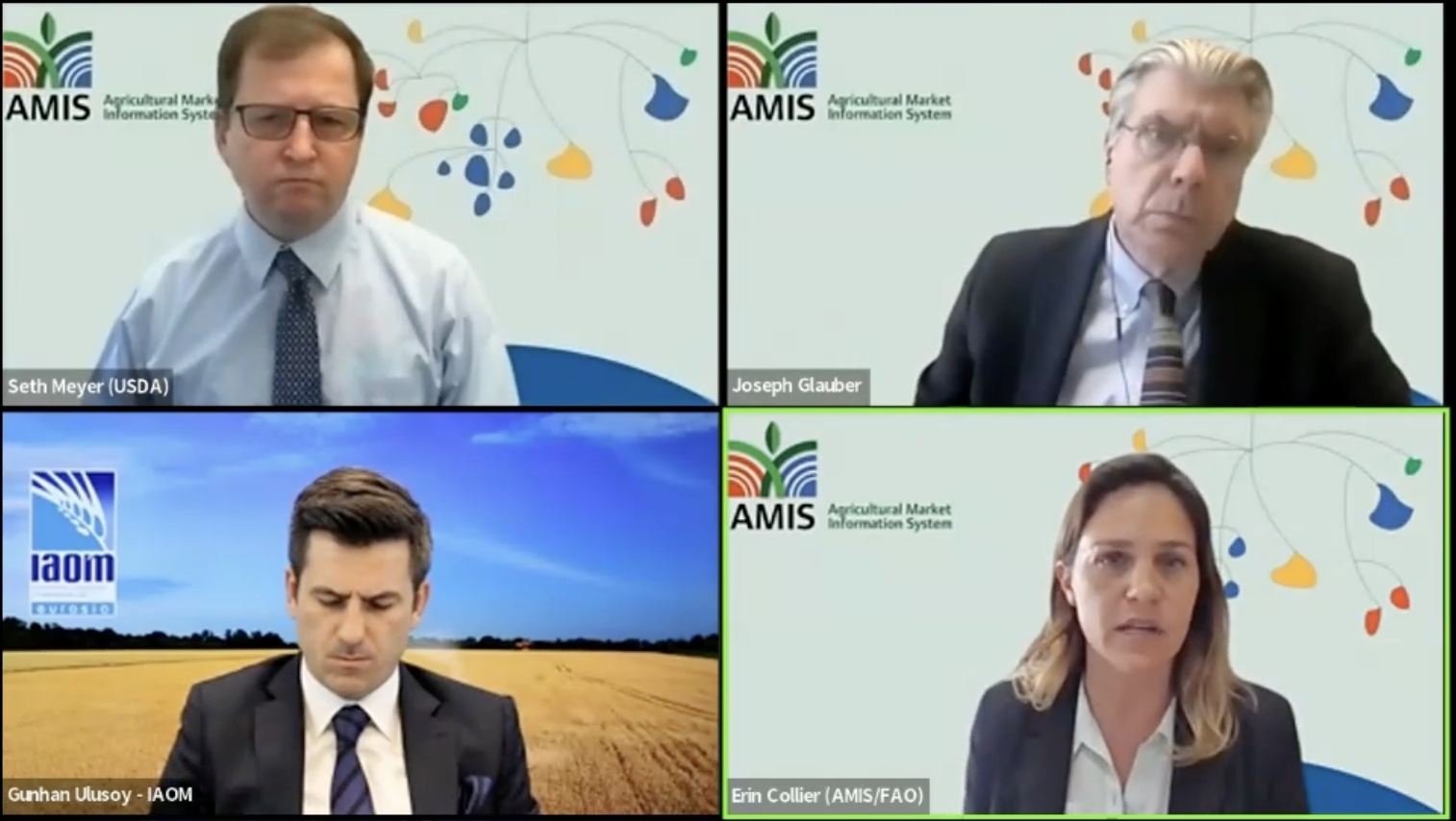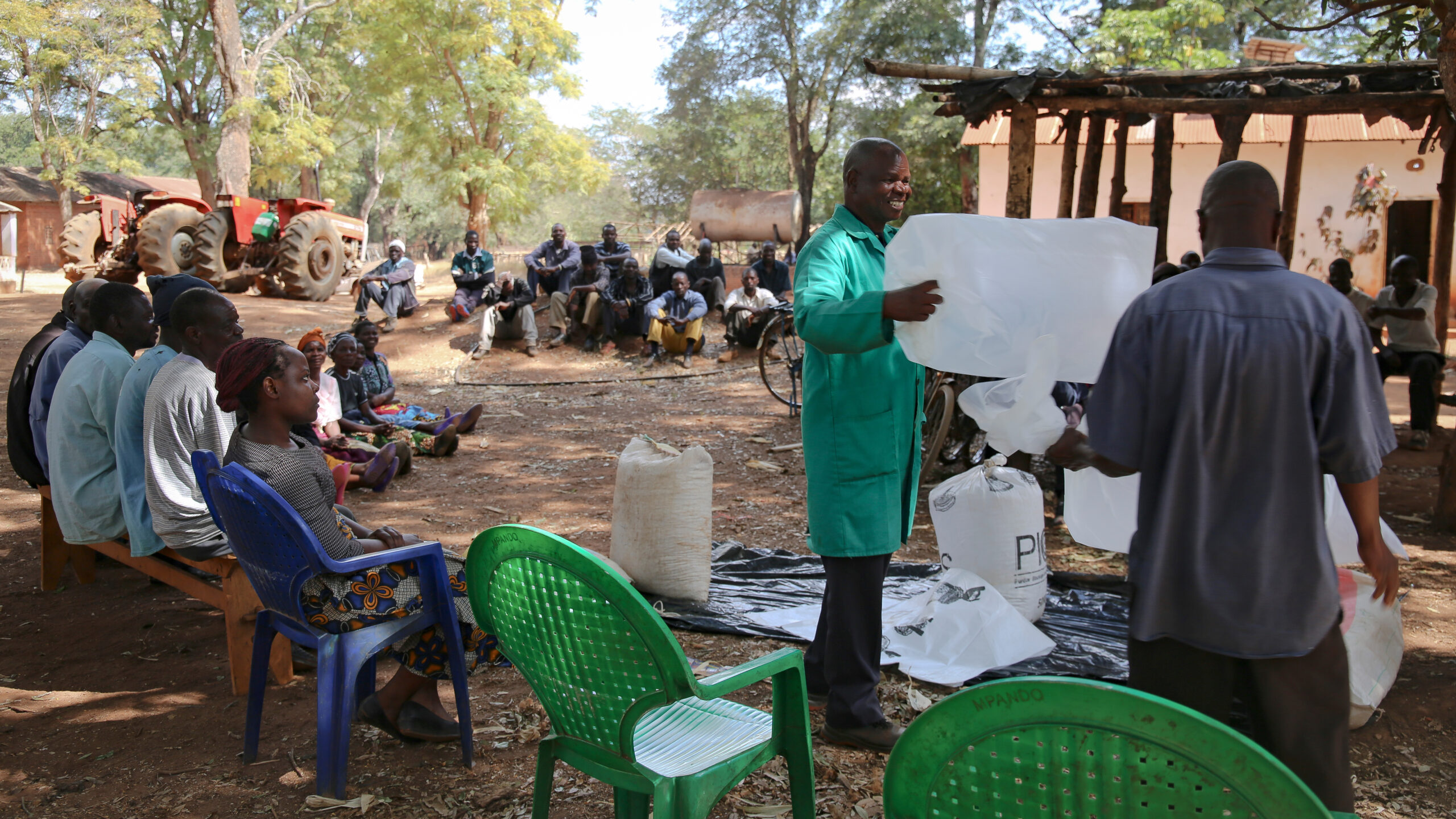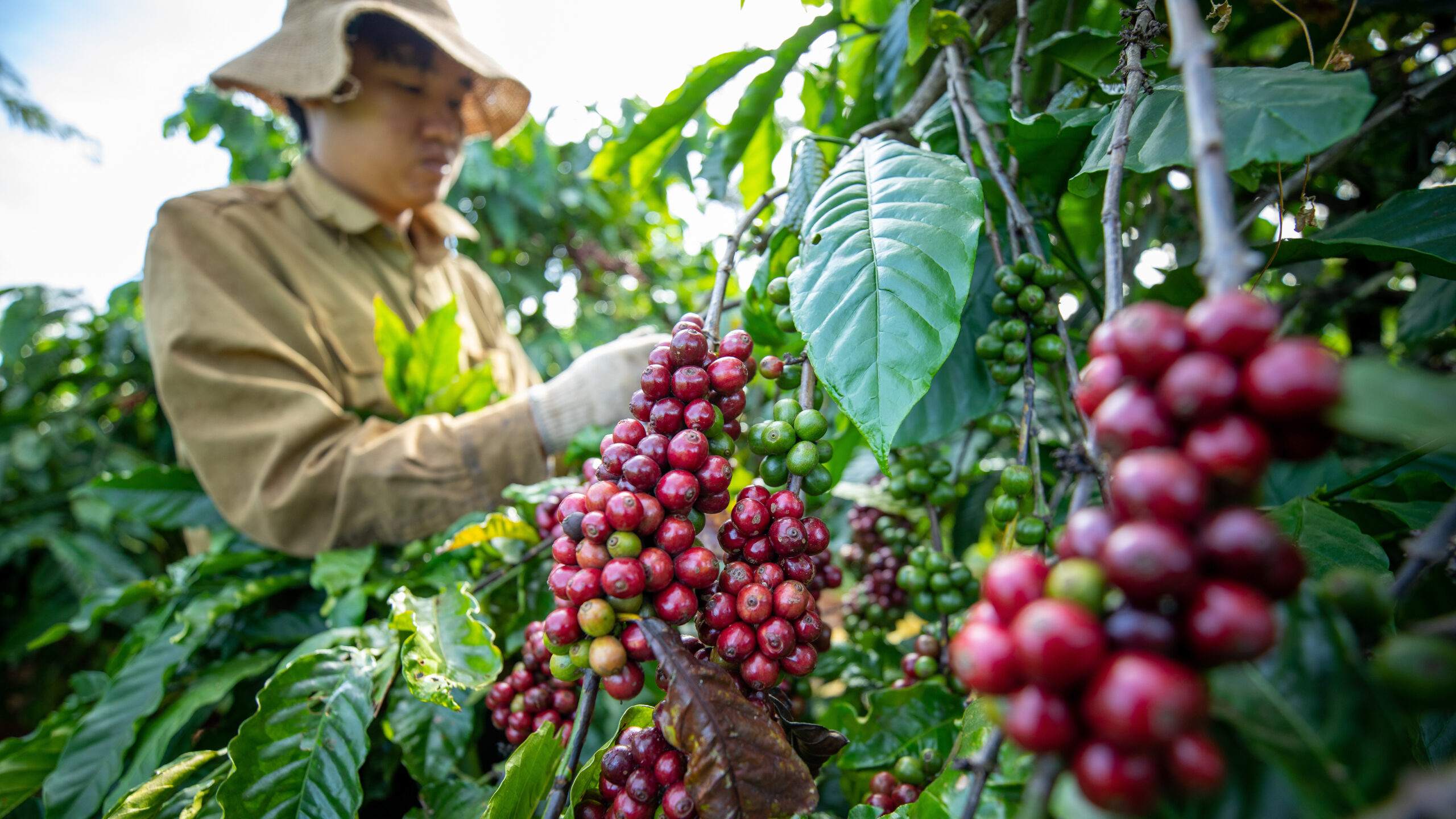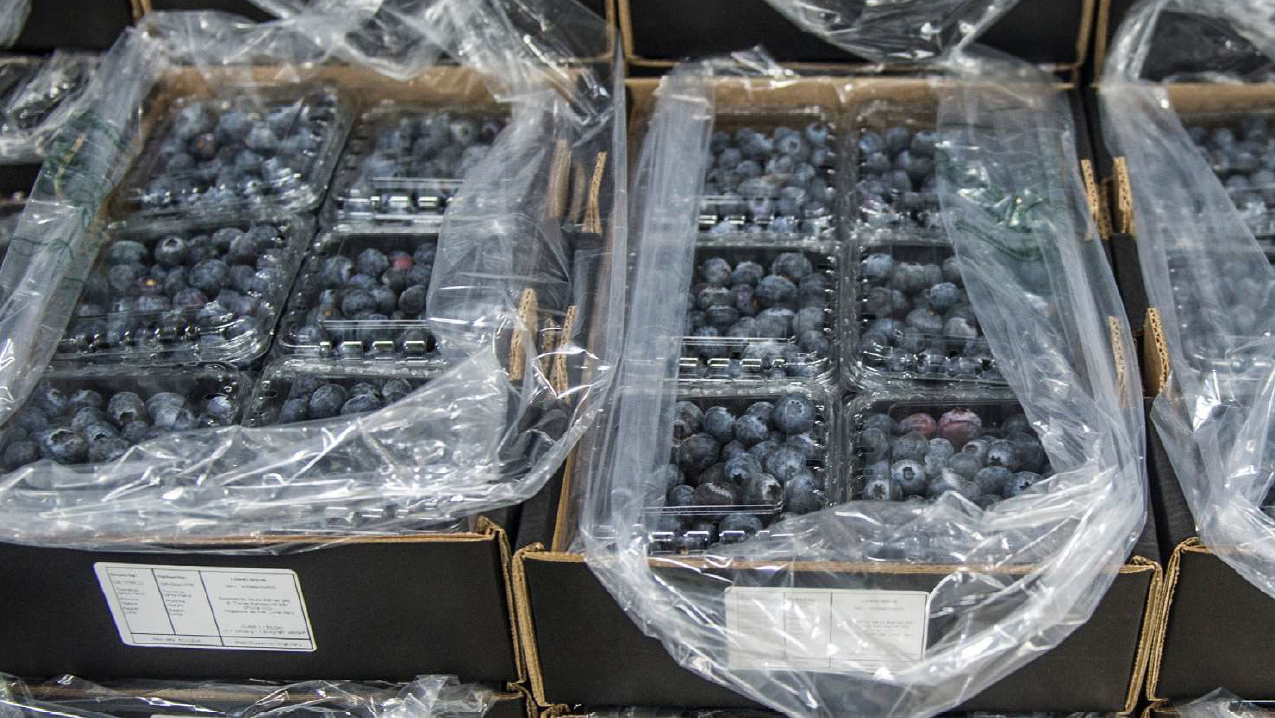With the Russia-Ukraine war entering its second year, prices of grains, fertilizers, and other agricultural commodities have fallen back somewhat from their early post-invasion highs, and supply disruptions have moderated. A March 8 policy seminar examined how Ukraine’s agricultural sector is faring, and the war’s continuing impacts on global markets and regional food security, as well as fallout from the devastating February 6 earthquake that stuck Syria and Türkiye, the world’s largest flour producer.
The event, co-sponsored by IFPRI and the Agricultural Market Information System (AMIS), was orchestrated by USDA Chief Economist and AMIS Chair Seth Myer, Senior Research Fellow and AMIS Secretary Joe Glauber, and Erin Collier of FAO’s Global Commodity Markets team.
Nicholay Gorbachev, head of the Ukrainian Grain Association, predicted the war would have negative long-term impacts on the country’s agricultural production, pointing to the large amount of still unexploded shells and mines that remain in Ukrainian fields (Figure 1).
Figure 1
Ukrainian Grain Association
Holes from Russian bombings pockmark agricultural fields in Ukraine.
In 2021, Ukraine produced a total of 106.4 million metric tons of grains and oilseeds and exported 53.5 million tons. In 2022, production and exports decreased to 72.7 million tons and 51 million tons respectively. Further production and export declines—to 64.7 million and 45 million tons, respectively—are forecast for 2023, and Gorbachev said he believes these numbers might slip further.
Figure 2
The country is able to export grains and oilseeds under the Black Sea Grain Initiative via three Ukrainian ports and through solidarity lanes/grain corridors, where cargo travels via rail, truck, or river ports. The costs of exporting, however, are triple pre-war levels, meaning that Ukrainian wheat and corn farmers, who do not receive subsidies, risk not even breaking even under current conditions and may opt to grow other crops instead, Gorbachev said. The renewal of and smooth implementation of the Black Sea Grain Agreement is vital, he said, considering recent significant delays of vessels leading to very high demurrage charges. (Note: The agreement was extended for 60 days on March 18, with Russia continuing to publicly express doubts about it.)
Eren Günhan Ulusoy, Director, Eurasia Region, International Association of Operative Millers (IAOM), explained that Türkiye is not only an important wheat producer (harvesting 20 million tons annually, but on a reducing acreage) but also an important wheat importer. Russia is the source of 70%-80% of total imports, and since 2016 the country has also seen increasing imports from Ukraine; this latter trend accelerated starting in July 2022 thanks to the grain corridors. This combination of factors has facilitated increased exports to China, Spain, Italy, and the Netherlands and helped to bring international wheat prices down from their twofold increase after the invasion. Türkiye is also an important wheat processor, Ulusov noted, constituting some 25% of global flour trade, with significant exports destined for the Middle East and North Africa (MENA) region and for World Food Progamme (WFP) food aid procurement. The ongoing operation of the grain corridors is crucial, Ulusoy stressed, and is already incorporated into future prices.
Figure 3
The massive February 6 earthquake in Syria and southeast Türkiye impacted an important wheat growing and processing region, impeding 19% of Türkiye’s total wheat production and 16% of its total milling capacity. The decline in milling capacity, however, can be compensated by increased capacity in milling plants in other regions of Türkiye, considering that the sector has been operating at an average 52% of its overall capacity, and Ulusoy said he sees Turkish exports resuming normal levels, following an immediate decline after the earthquake.
Sikandra Kurdi, IFPRI Research Fellow, delineated the impacts of the war’s disruptions on household consumption in Yemen and Egypt. Prior to the invasion, wheat accounted for 46% of total daily calories consumed in Yemen. Most was imported, a large proportion from Russia and Ukraine, as well as through WFP food aid procurement (more than half of Yemeni households receive some form of food aid). Imports from India helped make up for the sharp declines from Russia and Ukraine after the war began; however, the WFP had to cut standard portions by 45%-55% in 2022 due to funding shortfalls.
Figure 4
Knock on effects of the dramatic wheat price increases in Yemen included a lack of capital for importers wishing to maintain incoming supplies and reduced household food expenditures, along with a shift towards cheap, less nutritious calorie sources, Kurdi said.
In Egypt, wheat represents 35%-39% of caloric intake, and both Russia and Ukraine have become very significant sources of wheat imports. The government allocates about half of total imports towards the supply of subsidized wheat flour and bread, and continued this policy even during the sharp rise in market prices. This in turn has contributed to a high fiscal burden also affected by several currency devaluations. The majority of poor and near poor households surveyed by IFPRI decreased consumption of animal source proteins, switching to less nutritious foods, while also reducing spending on healthcare and stopped repaying debt, Kurdi said.
David Laborde, Director, FAO Agrifood Economics Division, explained that in the uncertain market environment created by the war, a number of countries including Argentina, India, Indonesia, Kazakhstan, and Türkiye imposed export restrictions in 2022—another factor in higher international prices of key commodities. While quite heterogenous in nature and scope, these measures all shared a common feature: A lack of transparency. Only 13 out of 77 such measures were reported to the World Trade Organization (WTO) as required by global trade rules, and often with significant delay. Referring to the reflexive response of some countries to seek self-sufficiency in agricultural production in order to escape the vagaries of trade shocks, Laborde urged caution. Since shocks also occur at the national level, he said, “no one solution can protect you from all risks.” Diverting potential exports to build buffer stocks, he said, also carries risks, given the high costs of storage and potential deterioration of quality over time, contributing to food loss and waste. A better solution to promote food security, Laborde said, was making agricultural systems around the world more resilient by investing in improved varieties that can better withstand drought, and working for a more peaceful world.
Charlotte Hebebrand is IFPRI's Director of Communications and Public Affairs.







